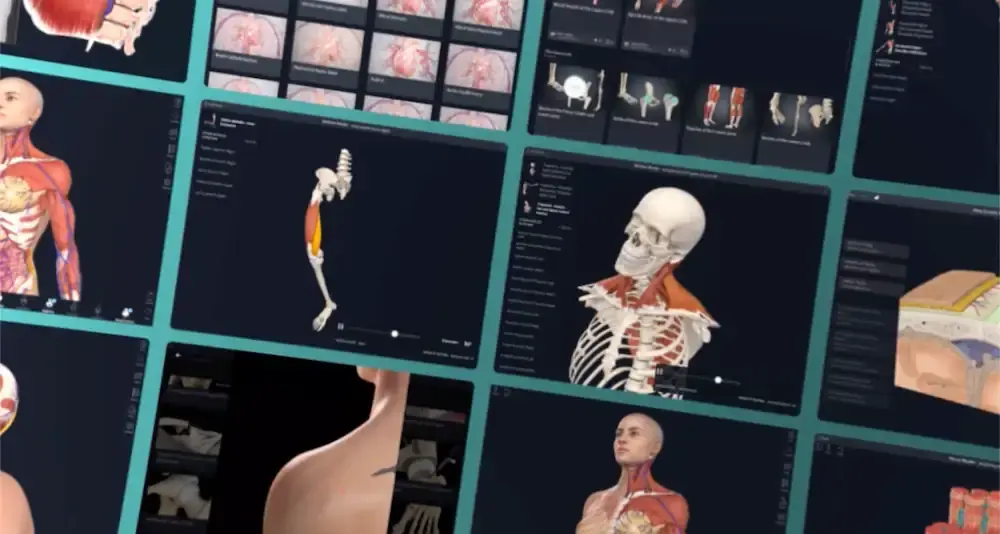
Description
The vertebral column is formed by the vertebrae. The joints of the vertebral column include cartilaginous, fibrous, and synovial joints. The integrity of the vertebral column is reinforced by several sets of ligaments. Strong ligaments, such as the anterior and posterior longitudinal ligaments, line the vertebral bodies. The ligamenta flava, interspinous, supraspinous, and intertransverse ligaments join adjacent vertebrae and aid in stability of the vertebral column. The zygapophyseal joints are planar synovial joints that connect the articular facets of adjacent vertebrae. The joints between the vertebral bodies are cartilaginous and contain the intervertebral discs. These fibrocartilaginous structures have an inner nucleus pulposus and an outer annulus fibrosus.
The cervical vertebral column consists of seven cervical vertebrae between the skull and the thoracic vertebrae. They have relatively thick (in respect to their vertebral bodies) intervertebral discs interposed between each vertebral body, although there is no disc present between the first and second cervical vertebrae (the atlas and axis, respectively). The anterior longitudinal ligament extends from the first cervical vertebra to the sacrum, while the posterior longitudinal ligament extends from the second cervical vertebra to the sacrum. Proximally, the posterior longitudinal ligament is continuous with the tectorial membrane as far as the occipital bone. Flexion of the vertebral column is greatest in the cervical region, while also permitting lateral flexion, extension, and rotation.
The thoracic vertebral column contains 12 thoracic vertebrae, which are unique in that they allow for the attachment of the ribs. Their intervertebral discs are thin relative to the size of their vertebral bodies, thus transferring stability t the sternum via the ribs and costal cartilages. Rotation is permitted in the thoracic region, while flexion is somewhat limited.
The lumbar vertebral column typically consists of five lumbar vertebrae with their vertebral bodies connected by intervertebral discs. The positioning of the zygapophyseal joints that connect the articular facets of adjoining vertebrae allows for a range of movements of the lumbar region (flexion, extension, lateral flexion, and rotation). Several sets of ligaments contribute to stability of the lumbar region. The anterior and posterior longitudinal ligaments run inferiorly along the anterior and posterior aspects of the vertebral bodies respectively. The interspinous and supraspinous ligaments connect the spinous processes, the intertransverse ligament link the transverse processes, and the ligamenta flava connects the laminae of each adjacent lumbar vertebra.
The sacrum is formed by five, fused, sacral vertebrae and it is continuous inferiorly with the fused coccygeal vertebrae. The coccyx typically has four vertebrae, but this can vary from three to five. Longitudinal ligaments, which stretch from the atlas to the coccyx, support the anterior and posterior surfaces of the sacrum and coccyx. Additional ligaments such as the sacroiliac, sacrospinous, and sacrotuberous ligaments help to provide structural integrity to the pelvis and the pelvic cavity.
Related parts of the anatomy
Learn more about this topic from other Elsevier products
Joints of the vertebral column: Video, Causes, & Meaning

Joints of the vertebral column: Symptoms, Causes, Videos & Quizzes | Learn Fast for Better Retention!




